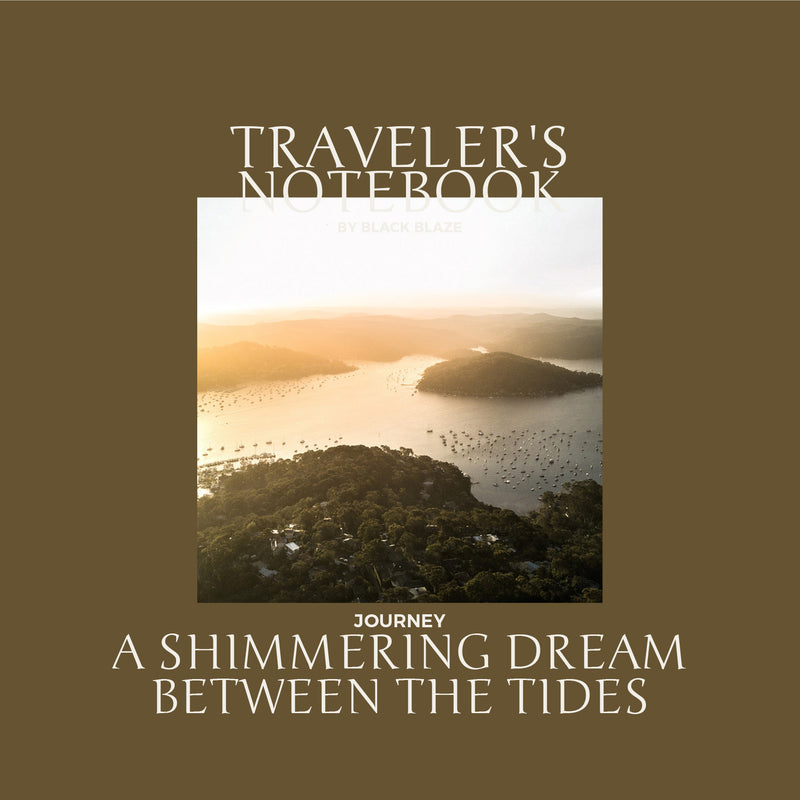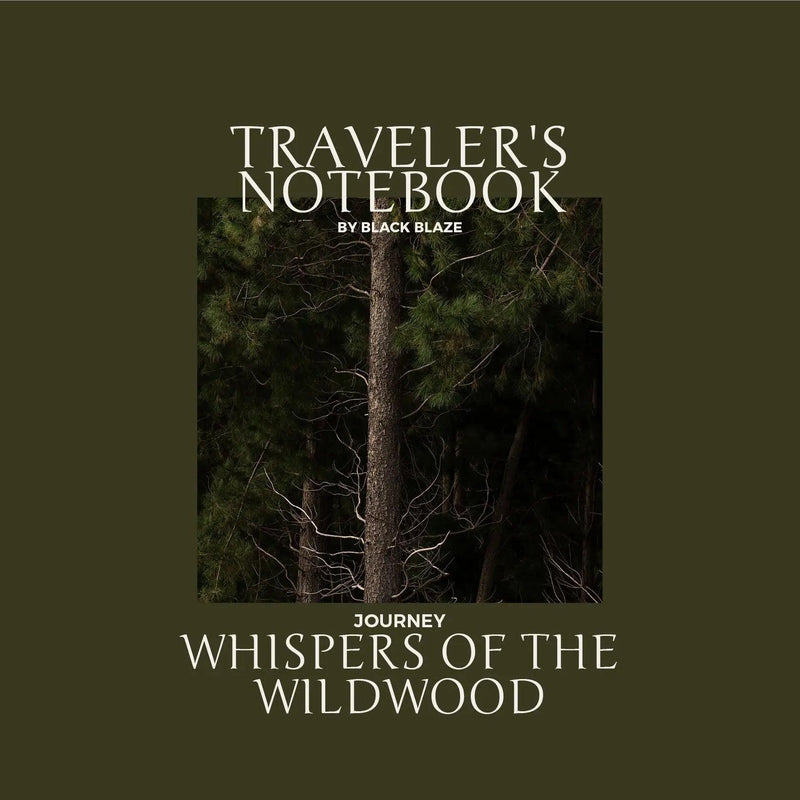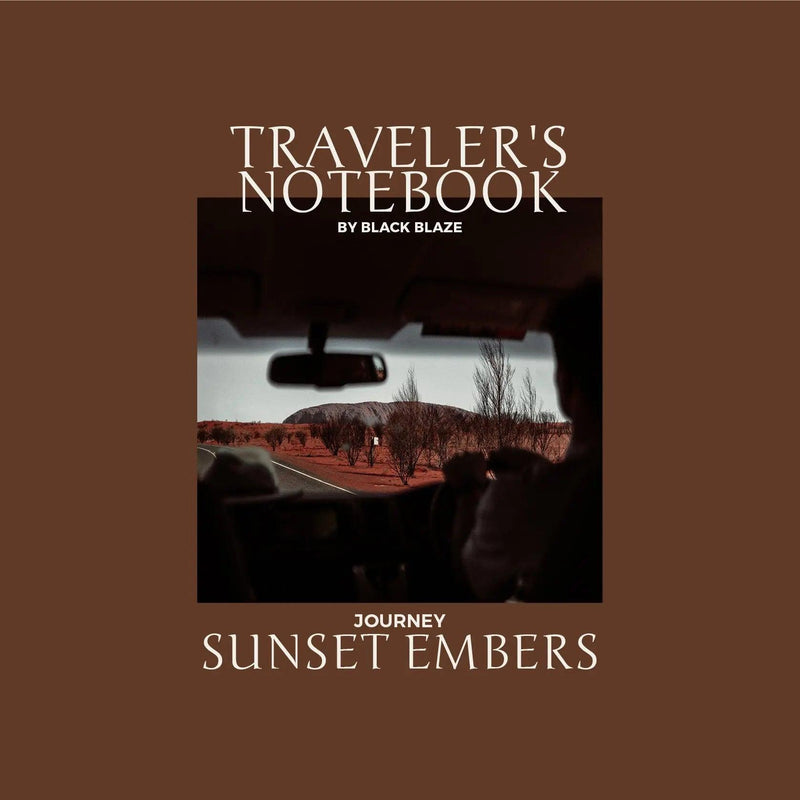
If you grew up in Australia, it’s likely you’ve been regaled with tales of the Kimberley. Far away at the top of the continent, its colour and beauty is the stuff of legend. In many a mind, if you wanted to venture into the pristine wild, into a land that appears older than time, this is where you travelled.

Today, Tania is renowned for her aerial photography - painting-like creations that celebrate fleeting moments. Waterways feature prominently, and while these shift in any setting, their changes are particularly heightened in Australia’s north, where the year is divided into the Wet and the Dry. Her images are not entirely of this Earth, and remind us to seek the beauty in the familiar. So, when travel magazine Lodestars Anthology collaborated with Black Blaze on a custom candle, it felt right to feature Tania’s work on the packaging.
In the photograph we chose, Tania’s pinks are dazzling and the traces of long-lost waterways are hypnotic. To us, it was Australia and - given where it was snapped - it conjures the allure of our skies; a striking representation of their immensity, freshness and clarity. In the Lodestars candle, this feeling was remade using natural scents such as rosewood, pine needle, bergamot, clove leaf and eucalyptus.
It should come as little surprise that we jumped at the chance to talk to Tania about Australia and her art. She understands its light and weather, shares her knowledge freely and believes that everyone can be a photographer, as long as they’re confident enough to see something beautiful.

You’ve spent years capturing Australia from the land and sky. How do you choose your subjects?
I'm always looking - at the landscapes, shapes, form and light - and I'm always planning. From the minute I see something as a photogenic vista, whether it’s photogenic at the time or not, I'm thinking about how I'm going to capture it in what I see as its perfect moment. It’s hard because everything is beautiful. It doesn't matter what it is. Once the light hits it in its perfect moment, it’s spectacular. Whether it’s a street sign, the edge of a building, a rubbish bin or a beautiful rock face.
I know what I'm looking for and I know what sort of light I want. I love soft light, I find it incredibly beautiful, like the Impressionists. The way they used light was just so soft and delicate - every detail in the picture had its beauty because of that light. It’s the same with a photograph. If I think something is going to be spectacular on a cloudy day, then I watch the clouds. There are places that I won’t even attempt to photograph during the dry season because I know there’s not going to be the light I'm looking for. But there’s also times when I think things will look beautiful on a smokey day when there’s all the beautiful light diffusion in the air and the smoke will soften that harsh dry season Kimberly light. In the mornings, the light is much softer than the light in the afternoon, and the gradual lead-up to sunrise is much slower than a fast sundown. I have to read and know the weather - when I look at the radar in the afternoon, or look up at the sky and think there’s going to be a storm that night because of the way the clouds are building, then I need to get ready and decide where I'm going to go.

So much of your work has been taken in the Kimberley. Many people visit talk about being blown away by the night sky. Indeed, the sheer number of stars and the purity of the Kimberley air helped inspire the Lodestars candle. What makes the region special for you?
It’s still so remote and so largely untouched. The reds speak to me and the sunrise light is my muse, that's my colour palette, that's what I love. And I love the diversity. I can go and shoot rock walls and reflections and I can go and shoot aerials and create with the aerials. Landscapes are creations too, but they’re also record. I can see things differently from the sky.


You must have seen some fascinating things from the sky - the patterns in the land, the muted pastels and brilliant blues, the storms, floods and droughts. Have you had a particularly memorable photographic experience?
The most memorable was when I did the Kati Thanda-Lake Eyre flights. I went down to Kati Thanda and did a few flights over a month or two from Alice Springs, and the way the lake transformed over just a few weeks - from being flooded to being completely dry, and the shifts in colour - just blew me away. It’s a realisation that with water, things completely change. With the colour, with how landforms have moved or how different obstructions have created different patterns. It made me realise that I can never say that I’ve flown Kati Thanda, because I could easily fly again and have something completely and absolutely different, even though it might be exactly the same spot. It’s the same with the coastline, particularly up north where they’re so big. It just takes one little thing to change that shape. Each wet season brings different colours depending on which sediments have been washed down the rivers. I'm never going to get bored photographing the same spot because its never going to look the same.
People ask me to take them to where I photographed Ribbon Dancer [her award-winning shot of the Timor Sea], but Ribbon Dancer isn’t going to be there because it was a split moment in time. The refection of the sky to make the water blue, the time of the tide, and where it is in the tide cycle, the angle of the plane - it’s never going to be the same. Whereas I can go and take a photo on the Cockburn Range in Kununurra and people will say, ‘I know where that is’, because the form is constant.

Your images of the build up to the Wet are amazing. Looking at them, you can almost smell the coming rain and the summer frangipanis. The aromas, sensations and skies must be so unique. How would you describe this period to someone who hasn't experienced it?
The build up is the most amazing time of the year. It’s a release for your body because there’s actually clouds in the sky that are the right shade. The heat is relentless, so when it breaks, your body breathes this sign of relief. Then you get these incredible cloud formations and sunsets and single super cells that come out of nowhere and last a few minutes - and the amount of rain! And you can see everything right in front of you. It’s incredible. You can watch a small bushfire create a thunderstorm that has ten lightening strikes every couple of minutes. It’s an adrenaline rush to go out and see this monster of a storm come towards me. I have ask myself, ‘do I want to capture it or do I want to stand here and just get blown away by the power of this thing in the sky in front of me?’
Learning to slow down is an art. We build rituals around it: we light candles, head into the wild, play music, practice the things we love - like photography. Are you good at watching the world around you, or do you feel a constant need to document things?
As I've matured, I’ve taken the time to observe, because if I'm intending to photograph something it's not just a matter of pulling out my camera. It’s like a surfer watching the waves before getting in the water. You have to know what you’re dealing with before you photograph it, otherwise you're going to get stranded or hurt.
I always take the time to appreciate what’s in front of me because I need to find an angle or a foreground - is it going to be about the sky or the lightening or the rain? It’s nice sometimes to get out and watch everything unfold, to learn to relax and appreciate things. I don't actively chase storms, but they’re something I enjoy photographing because they make a scene more dynamic - especially with the light and colours they bring, and the way they drown out a background. But I often do just sit and appreciate what’s around me. I think you have to.

Interview by Liz Schaffer & Photographs by Tania Malkin



